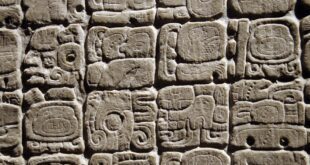Forging Our Ancestral Roots: Exploring Lost Societies and Ancient Art
The past holds many secrets, and unlocking those secrets can transform our understanding of who we are and how we came to be. The study of human ancestry encompasses everything from exploring lost civilizations to analyzing ancient art. In this article, we will take a closer look at the topic of forging human ancestry, focusing specifically on lost civilizations and the art of paleolithic times.
Subheading 1: Unearthing Lost Civilizations
The world is littered with traces of civilizations that once thrived but are now lost to the sands of time. The study of these lost societies, known as archaeology, can help us piece together the puzzle of our shared human history. By examining the artifacts, structures, and other remnants of these societies, scholars can gain valuable insights into what life was like in the past.
One example of a lost civilization is the Maya of Central America. This society flourished from roughly 2000 B.C. to the 16th century A.D., developing complex cities with impressive architecture and a system of writing. Another lost civilization is the Indus Valley Civilization of ancient India and Pakistan, which dates back to around 3300 B.C. and is thought to have been one of the most advanced societies of its time.
Studying lost civilizations can give us a glimpse into the diversity of human culture and the technological and societal advances that came before us.
Subheading 2: The Art of Paleolithic Times
Art is one of the most powerful ways we can connect with the past. The art of paleolithic times, in particular, provides a window into the lives and beliefs of our ancient ancestors. Paleolithic art refers to the creations of humans living during the Paleolithic Era, which dates back over 2.6 million years and ended around 12,000 years ago.
Some of the most famous examples of paleolithic art include cave paintings found in places like Lascaux, France, and Altamira, Spain. These vivid depictions of animals and hunting scenes help us discern the cultural beliefs and practices of the people who created them.
Paleolithic art isn’t just found in caves, however. Stones and bones from this era also bear etchings and carvings, from handprints and geometric patterns to more complex designs.
Through the art of our ancestors, we can see what was significant to them and what they wanted to preserve and pass down through generations.
Wrap-Up
The study of forging human ancestry serves not just the purveyors of history, but all of us who live in the present. By exploring lost civilizations and ancient art, we learn about our ancestral roots, our human diversity, and our shared experiences throughout the ages. Let’s continue to delve deeper into the secrets of our past and take joy in the journey.
 Mind Uncharted Explore. Discover. Learn.
Mind Uncharted Explore. Discover. Learn.



